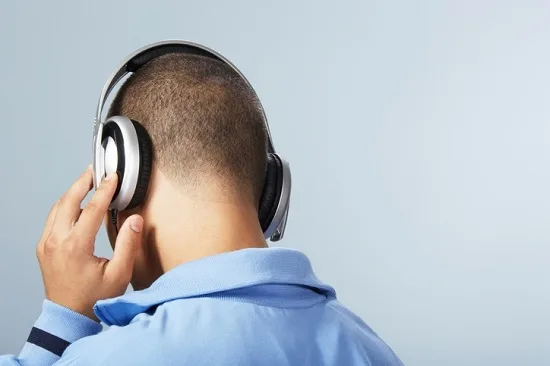If you suspect hearing loss only happens to seniors, you might be surprised to learn that today 1 out of every 5 teenagers has some degree of hearing loss in the US. Furthermore, the rate of hearing loss in teens is 30 percent higher than it was in the 1980s and 1990s.
It should come as no surprise then that this has caught the notice of the World Health Organization, who in response issued a statement notifying us that 1.1 billion teens and young adults worldwide are at risk for hearing loss from unsafe listening habits.
Those unsafe habits include attending noisy sporting events and concerts without hearing protection, along with the unsafe use of earphones.
But it’s the use of earphones that could very well be the number one threat.
Reflect on how frequently we all listen to music since it became transportable. We listen in the car, on the job, at the gym, and at home. We listen while out for a stroll and even while going to sleep. We can combine music into nearly every aspect of our lives.
That amount of exposure—if you’re not cautious—can gradually and silently steal your hearing at an early age, leading to hearing aids in the future.
And considering that no one’s prepared to give up music, we have to determine other ways to safeguard our hearing. Fortunately, there are simple precautions we can all adopt.
The following are three important safety guidelines you can use to preserve your hearing without sacrificing your music.
1. Limit Volume
Any sound louder than 85 decibels can trigger permanent hearing loss, but you don’t need to invest in a sound meter to measure the decibel output of your music.
Instead, an effective rule of thumb is to keep your music player volume at no more than 60 percent of the maximum volume. Any higher and you’ll probably be over the 85-decibel threshold.
In fact, at their loudest, MP3 music players can pump out more than 105 decibels. And given that the decibel scale, like the Richter scale, is logarithmic, 105 decibels is about 100 times as intense as 85.
Another tip: normal conversation registers at about 60 decibels. So, if when listening to music you have to raise your voice when communicating to someone, that’s a good indicator that you should turn the volume down.
2. Limit Time
Hearing damage is not only a function of volume; it’s also a function of time. The longer you expose your ears to loud sounds, the more substantial the injury can be.
Which brings us to the next general guideline: the 60/60 rule. We previously suggested that you keep your MP3 player volume at 60 percent of its maximum volume. The other aspect is making sure that you limit the listening time to under 60 minutes a day at this volume. And bear in mind that lower volumes can handle longer listening times.
Taking regular rest breaks from the sound is also crucial, as 60 decibels uninterrupted for two hours can be much more damaging than four half-hour intervals distributed throughout the day.
3. Pick the Right Headphones
The reason the majority of us have a hard time keeping our music player volume at under 60 percent of its maximum is a consequence of background noise. As environmental noise increases, like in a busy fitness center, we have to compensate by increasing the music volume.
The solution to this is the usage of noise-cancelling headphones. If background noise is mitigated, sound volume can be limited, and high-fidelity music can be enjoyed at lower volumes.
Low-quality earbuds, in contrast, have the dual disadvantage of being closer to your eardrum and being incapable of controlling background noise. The quality of sound is lower as well, and combined with the distracting external sound, increasing the volume is the only way to compensate.
The bottom line: it’s well worth the money to invest in a pair of high quality headphones, ideally ones that have noise-cancelling functionality. That way, you can stick to the 60/60 rule without compromising the quality of your music and, more importantly, your hearing down the road.

